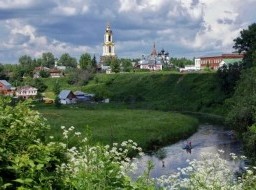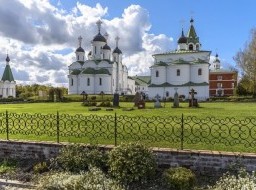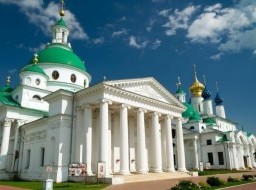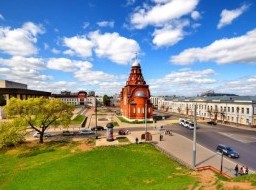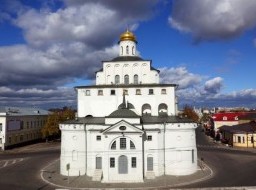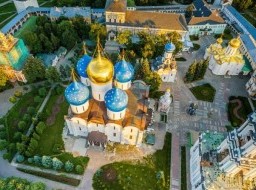Spaso-Evfimiyev Monastery
Founded in the 14th century to protect the town’s northern entrance, Suzdal’s biggest monastery grew mighty in the 16th and 17th centuries after Vasily III, Ivan the Terrible and the noble Pozharsky family funded impressive new stone buildings and made large land and property acquisitions. It was girded with its great brick walls and towers in the 17th century. Right at the entrance, the Annunciation Gate Church houses an interesting exhibit on Dmitry Pozharsky (1578–1642), leader of the Russian army that drove the Polish invaders from Moscow in 1612. A tall 16th- to 17th-century cathedral bell tower stands before the seven-domed Cathedral of the Transfiguration of the Saviour; every hour on the hour from 11am to 5pm a short concert of chimes is played on its bells. The cathedral was built in the 1590s in 12th- to 13th-century Vladimir–Suzdal style. Inside, restoration has uncovered some bright 1689 frescoes by the school of Gury Nikitin from Kostroma. The tomb of Prince Dmitry Pozharsky is by the cathedral’s east wall. The 1525 Assumption Refectory Church, facing the bell tower, adjoins the old Father Superior’s chambers, which house a display of Russian icons and an excellent naive-art exhibition showcasing works by local amateur painters from the Soviet era. The old Monastery Dungeon, set up in 1764 for religious dissidents, is at the north end of the complex. It now houses a fascinating exhibit on the monastery’s prison history, including displays of some of the better-known prisoners who stayed here. The Bolsheviks used the monastery as a concentration camp after the 1917 revolution. During WWII, German and Italian officers captured in the Battle of Stalingrad were kept here. To the northeast of the main cathedral group, the combined Hospital Chambers & St Nicholas Church feature a rich collection of gold church treasures. |

